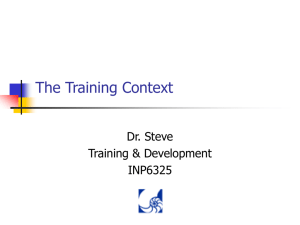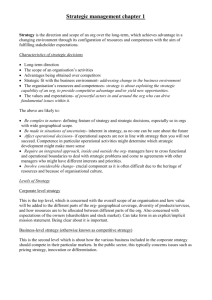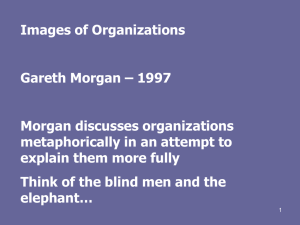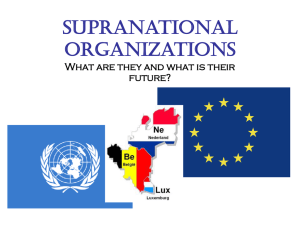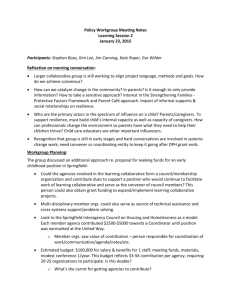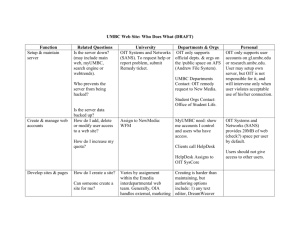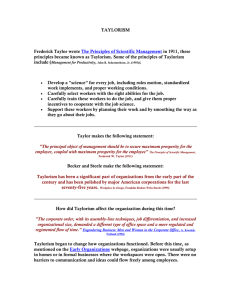Management And Human Relations: Lecture Note Outline
advertisement
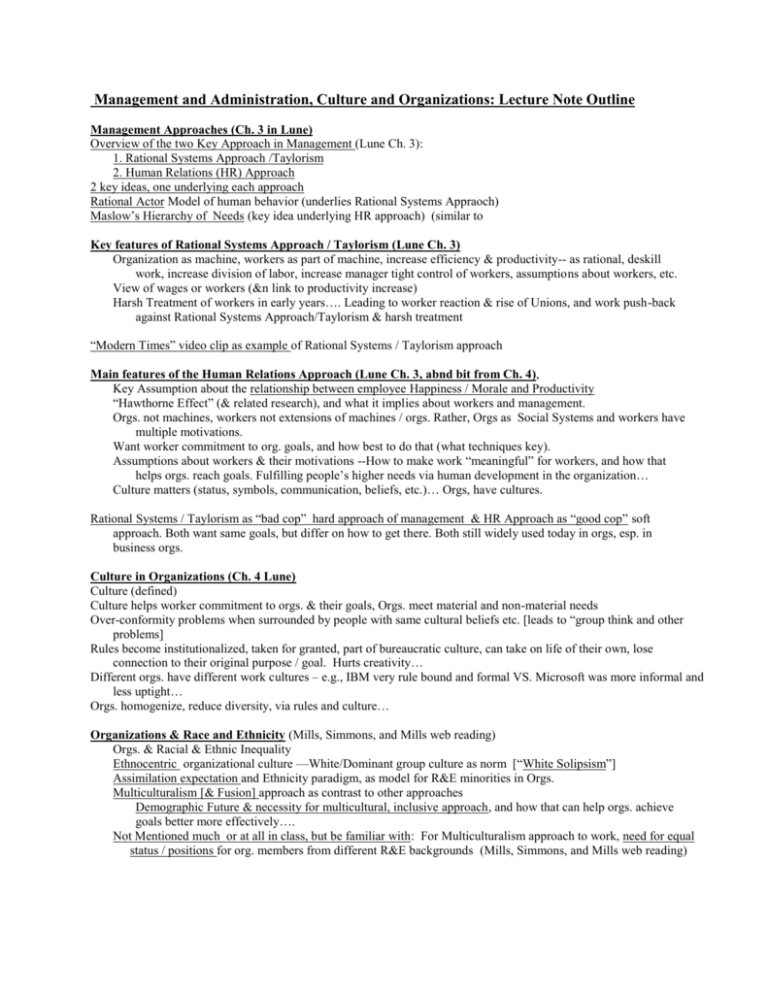
Management and Administration, Culture and Organizations: Lecture Note Outline Management Approaches (Ch. 3 in Lune) Overview of the two Key Approach in Management (Lune Ch. 3): 1. Rational Systems Approach /Taylorism 2. Human Relations (HR) Approach 2 key ideas, one underlying each approach Rational Actor Model of human behavior (underlies Rational Systems Appraoch) Maslow’s Hierarchy of Needs (key idea underlying HR approach) (similar to Key features of Rational Systems Approach / Taylorism (Lune Ch. 3) Organization as machine, workers as part of machine, increase efficiency & productivity-- as rational, deskill work, increase division of labor, increase manager tight control of workers, assumptions about workers, etc. View of wages or workers (&n link to productivity increase) Harsh Treatment of workers in early years…. Leading to worker reaction & rise of Unions, and work push-back against Rational Systems Approach/Taylorism & harsh treatment “Modern Times” video clip as example of Rational Systems / Taylorism approach Main features of the Human Relations Approach (Lune Ch. 3, abnd bit from Ch. 4), Key Assumption about the relationship between employee Happiness / Morale and Productivity “Hawthorne Effect” (& related research), and what it implies about workers and management. Orgs. not machines, workers not extensions of machines / orgs. Rather, Orgs as Social Systems and workers have multiple motivations. Want worker commitment to org. goals, and how best to do that (what techniques key). Assumptions about workers & their motivations --How to make work “meaningful” for workers, and how that helps orgs. reach goals. Fulfilling people’s higher needs via human development in the organization… Culture matters (status, symbols, communication, beliefs, etc.)… Orgs, have cultures. Rational Systems / Taylorism as “bad cop” hard approach of management & HR Approach as “good cop” soft approach. Both want same goals, but differ on how to get there. Both still widely used today in orgs, esp. in business orgs. Culture in Organizations (Ch. 4 Lune) Culture (defined) Culture helps worker commitment to orgs. & their goals, Orgs. meet material and non-material needs Over-conformity problems when surrounded by people with same cultural beliefs etc. [leads to “group think and other problems] Rules become institutionalized, taken for granted, part of bureaucratic culture, can take on life of their own, lose connection to their original purpose / goal. Hurts creativity… Different orgs. have different work cultures – e.g., IBM very rule bound and formal VS. Microsoft was more informal and less uptight… Orgs. homogenize, reduce diversity, via rules and culture… Organizations & Race and Ethnicity (Mills, Simmons, and Mills web reading) Orgs. & Racial & Ethnic Inequality Ethnocentric organizational culture —White/Dominant group culture as norm [“White Solipsism”] Assimilation expectation and Ethnicity paradigm, as model for R&E minorities in Orgs. Multiculturalism [& Fusion] approach as contrast to other approaches Demographic Future & necessity for multicultural, inclusive approach, and how that can help orgs. achieve goals better more effectively…. Not Mentioned much or at all in class, but be familiar with: For Multiculturalism approach to work, need for equal status / positions for org. members from different R&E backgrounds (Mills, Simmons, and Mills web reading)

